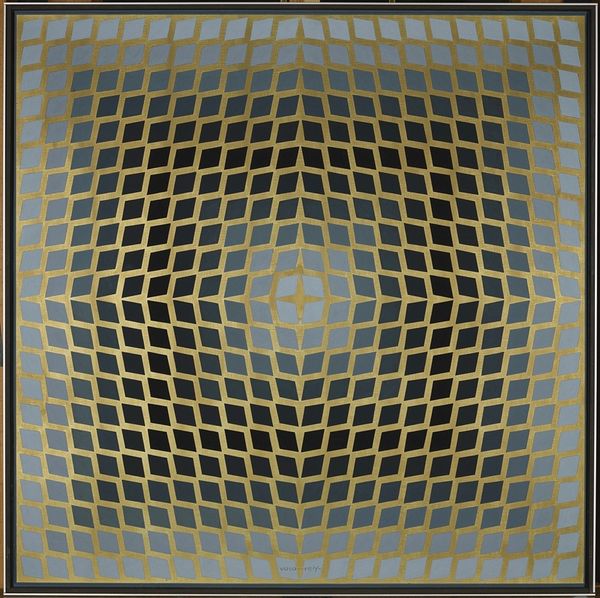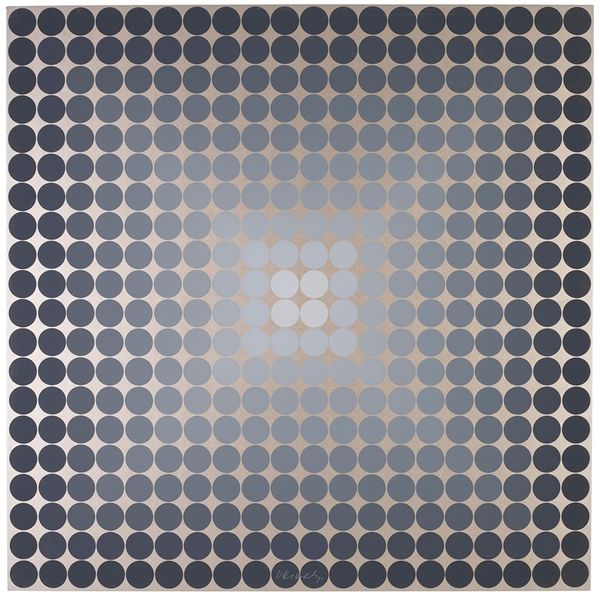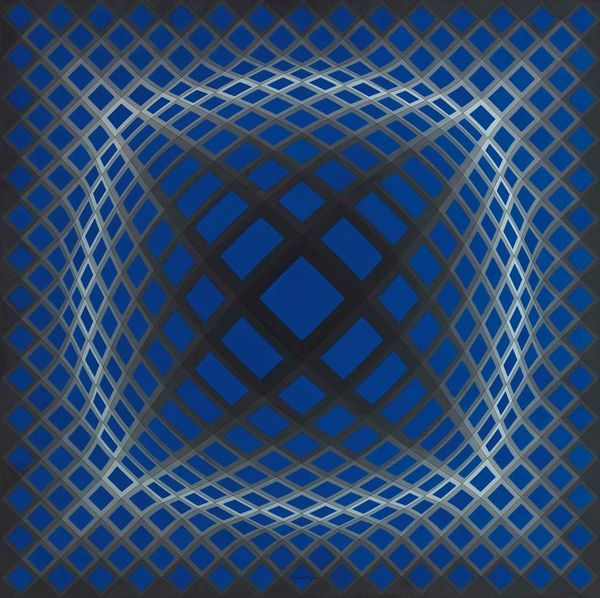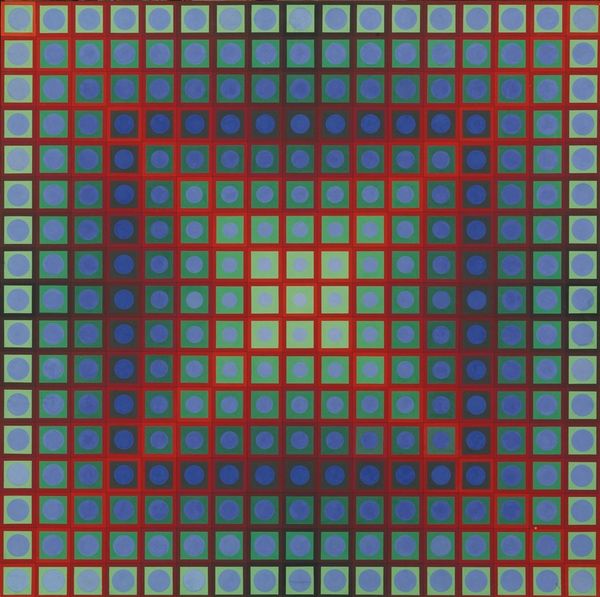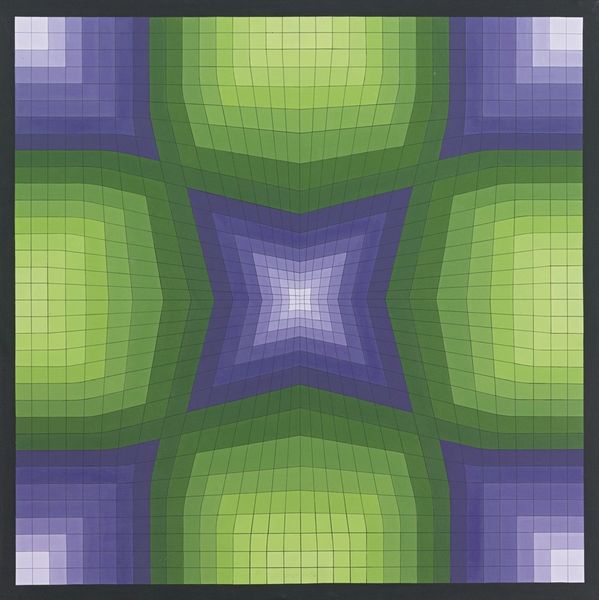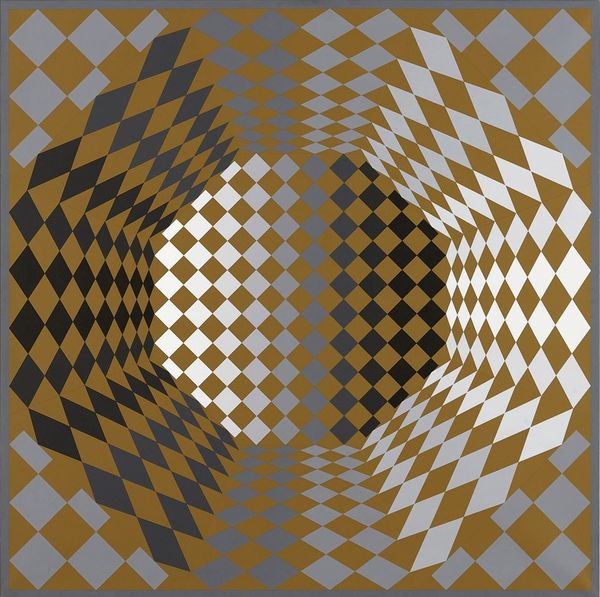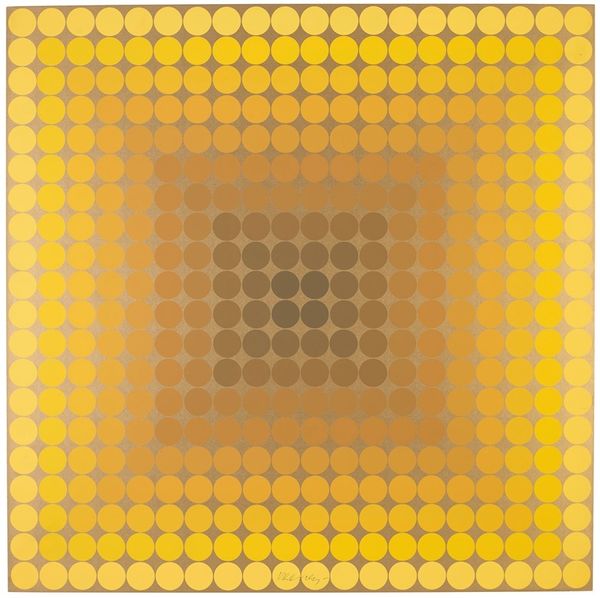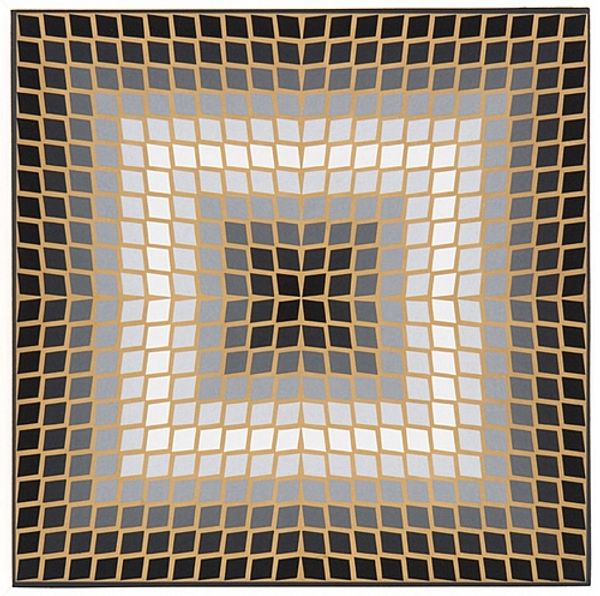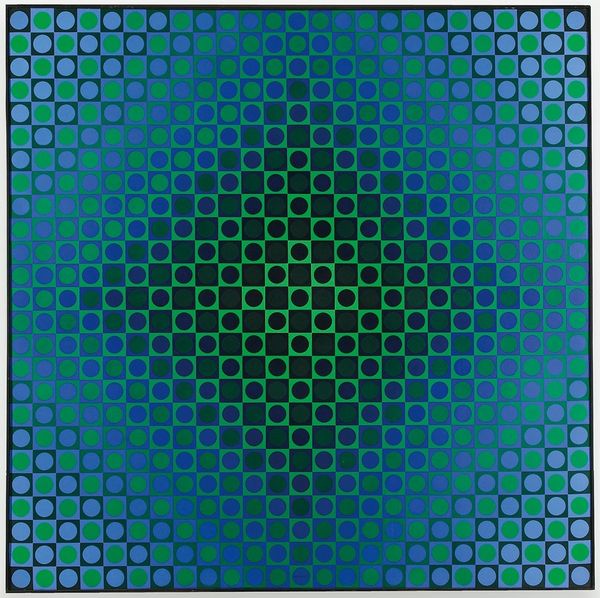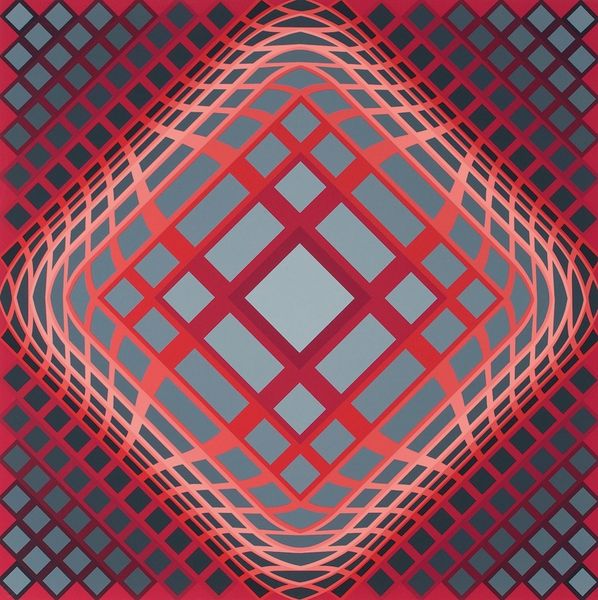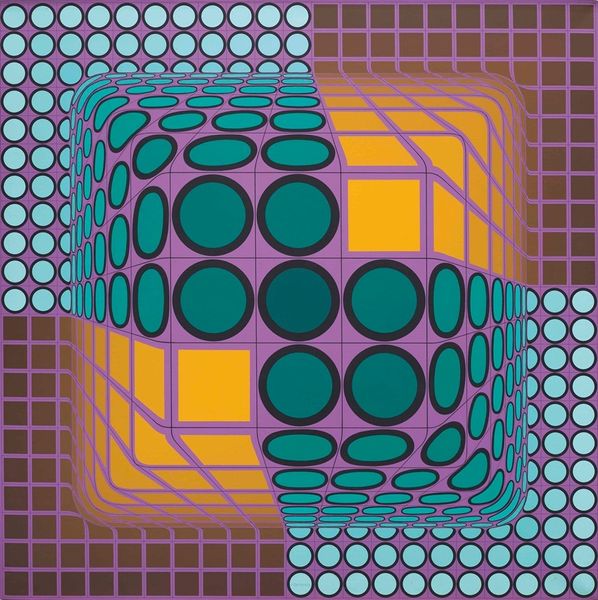
Copyright: Modern Artists: Artvee
Victor Vasarely's Tau-Cet-37 uses paint to create an abstract composition of shifting squares on a flat surface. This artwork reflects Vasarely’s interest in how geometric forms and color relationships could create the illusion of movement and depth, and perhaps, question our perception of reality. Made in France, Vasarely’s work was influential to the Op Art movement. This was a time when artists explored how visual perception could be manipulated and actively engaged by the viewer. It was also a period that questioned the traditional role of art and the art institution. Many Op artists sought to democratize art by creating works that could be easily reproduced and widely distributed. To better understand the social and cultural forces that shaped Vasarely’s artistic output, you might consider exploring the history of geometric abstraction. Researching the rise of consumer culture and the development of new technologies in the mid-20th century can reveal interesting historical and cultural contexts.
Comments
No comments
Be the first to comment and join the conversation on the ultimate creative platform.
